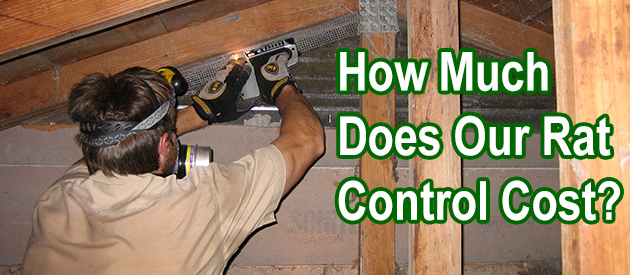Alachua County, Gainesville Rat Control Situation:
sir. first i want to thank you for all of this info. i have found one damn rat. i tried getting him out the door, but he ran right past me and up into the eves. very little or no evidence of him until i saw him. did i read they follow cockroaches? big palmetto style bugs. do they go after them to eat em? if so, ive many areas to address to seal. very fast son of a gun too. do u suggest i try baby powder at possible entry points for further evidence? ive only seen the one, but i know wheres one, more more than likely to follow. id love to shoot em, but the neighbors wouldnt like that. i reside in holiday florida. lots of work to do on eves and small openings, i just want to handle the lil bastard. thank you again. keith t. future rat murderer.....
Dear David, I am having a esculating problem with roof rats. I also have a disgruntled neighbor who I suspect of comitting malicious activity around my property. Is there anyway possible that acts of malicious behavior (such as tossing dog food, bird seeds ect. onto my property ) can be causing my rat problem. If so, how can I safeguard my attic from this invasion. The strange thing about the roof rat noise in the attic is that it is not consistent. My neighbor went on thanksgiving vacation and I did not hear the rat activity in the attic for one week. Upon his return, the problem returned. Is this possible and is there something I can do to safeguard the attic? I realize this is a strange situation.
Gainesville Rat Control Tip of The Week
Non-lethal Ways To Get Rid Of Rats
If you are the type that considers rats as small cute-looking creatures, you might feel bad for wanting to kill them because they are causing a nuisance in your home. The fact is, your feelings do count. But at the same time, you can't afford to continue watching as these little creatures destroy your home and put your life at the risk of contracting diseases.
We understand how you feel, which is why we will be sharing non-lethal ways to get rid of the rats in your home. With this, you will be able to get rid of the rats without actually killing them.
1. Get A Cat
Cats and rats are natural enemies. If you have a cat in your home, rats will try as much as possible to do all they can to avoid your home. The sound and smell of the cat alone will trigger the sense of the rats and will make them stay as far away as they can. With this method, you will be able to get rid of the rats in your home without even having direct contact with them.
2. Trap And Release
This is another way to get rid of the rats in your home, the only issue with the use of this method is that cannot be used in a home where there are many rats. This is mainly because rats are smart and will end up figuring out that it's a trap after they see it capture one or two other rats. To trap and release a rat, all you need is a live trap and bait.
Also, you need to understand the fact that when you capture a rat and release it into another environment, its chances of survival are very slim.
3. Use Natural Rat Repellent
Just like other animals, rats are sensitive to some smells and they will do all they can to stay away from those areas. You can take advantage of this as well and use it to get rid of the rats in your home. A mixture of cayenne pepper and peppermint will help you get this done.


